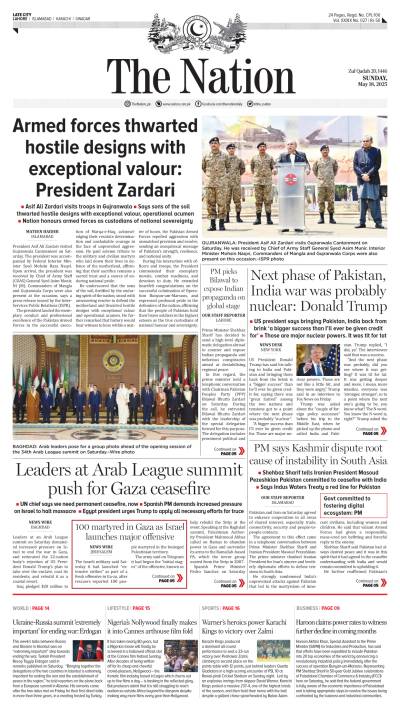The eight member countries of the South Asian Association for Regional Cooperation (SAARC) account for around a quarter of humanity, with a population of nearly 1.7 billion. However, SAARC only has a combined share of 3% of world GDP, roughly 2% of world exports and imports and around 1.7% of world inward FDI. It is dominated by India with 75% of the population of the region, 63% of land area and 81% of the combined GDP.
Although, the South Asian economies are now increasingly looking to exploit the benefits of greater market openness, their performance lags behind other regions. While trade as a percentage of GDP has risen from 19% to 30% between 1994 and 2010, it is still well below of other regions like East Asia (58%) and Europe (66%). They exhibit a similar tepid performance when it comes to trade and investment integration within the region and with the rest of the world – Intraregional trade for the SAARC region stands at a low 2% of GDP compared to 40% for the South East Asian region. SAARC is one of the least integrated regions in the world. It is also amongst the poorest. Almost 30% of SAARC population lives on less than $ 1 per day – representing 40% of the world’s poor in general. Despite the advantages of physical proximity, South Asian economies still choose to trade with the more distant economies of the United States and European Union. And it is here where Pakistan and India need to set the tone right and lead the way by correcting their respective trading priorities and preferring to trade with each other and within the region over others.
Countries these days are being seen to be moving back towards protectionism, opting increasingly for bilateral trade agreements (like preferential trade agreements, free trade agreements, mutual tariff arrangements, etc.) instead of pushing to conclude the larger pending Doha Agreement on overall global trade. However, on a positive note, of late, apart from the international pressure and WTO compulsions for freeing up bilateral trade between Pakistan and India, what we are seeing is a commitment and will by the two neighbors themselves to seriously work on a sustainable process of Indo-Pak trade liberalization. A realization by both Pakistan and India that in enhancement of economic cooperation not only lies the key to resolving their long-standing issues, but also the opportunity for realizing their true economic potential. Only developed Pakistan and India can provide the future for their citizens that they deserve but have been deprived of thus far. It is heartening to note that three key agreements were signed on September 21, 2012, in order to embark on the course of removing three main irritants or NTBs. 1) The Customs Cooperation Agreement, to avoid arbitrary stoppages of goods at each other’s ports and facilitate bilateral trade, 2) Mutual Recognition Agreement, for acceptance of certificates of internationally accredited laboratories, and seek harmonization in each other’s standards and certifications and 3) Redressal of Grievances Agreement, for resolving matters in case of any disagreements. Another agreement between the Export Inspection Council of India and Pakistan Standard and Quality Control Authority is also likely to be signed soon. If the logjam in the trade relations between Pakistan and India can somehow be resolved, it will automatically pave way for enhanced trade within the SAARC region per se.
Protectionism according to a study by the famous Lawrence and Edwards (Harvard professors) is a high-cost option in an interdependent environment and the socialist countries of the post World War II era learnt this the hard way. They basically argue on how increased but prudent imports induce indigenous industries to be more competitive. Ultimately this enhanced competitiveness leads to increase in exports of the country shunning protectionism. In the 18th century, a French social critic and political philosopher, Montesquieu, thought that commerce improves manners and cures most destructive prejudices. The concept is now gaining currency that intra-regional as well as inter-regional trade will lead to peace among nations that have conflicts and have seen many wars. Not only does trade promote peace, but the enhanced trading relations also multiply collective benefits for all stakeholders. There is no denying the fact that bilateral trade on equitable terms will surely be very beneficial to both Pakistan and India and increased trade within SAARC can be the main driver of growth for the entire South Asian region. The dynamics of smooth intra-regional trade can not only play a pivotal role in strengthening the economies of all South Asian countries, but also unleash a soft process, which over time can be the key to resolving long-standing sticky issues between countries. However, when it comes to taking bold initiatives between Pakistan and India, a careful cum proper homework needs to be done before embarking on the same. Too often have such endeavors failed simply because the key drivers in such attempts failed to adequately grapple with the elements of reciprocity and fair play to provide a level playing field to all parties. Only a carefully thought out process of negotiations and a comprehensive package of agreements followed by a sound monitoring & management mechanism that is practical, efficient and comprehensively addresses long standing concerns amongst the SAARC nations (especially between Pakistan and India) can bring about sustainable progress and a win-win for both countries. History tells us that the window of opportunity in Pakistan-India affairs is generally very small.
Recent economic history is full of examples where countries have achieved higher growth through enhanced economic and trade linkages; in fact the world economy itself over the last decade has mostly grown on the back of enhanced global trade. Perhaps the most note able recent work in this respect comes from the Nobel Laureate economist, Paul Krugman. What Krugman really explained in his Nobel winning work was that in reality when trade barriers fall trade increases. His work on scale economies for the first time gives economics a sense of space backed by explicit and empirical data. He explains citing tangible evidence that, 1) Regions, which fail to offer space for joint production and common productivity development, tend to lose out in the long run. 2) Negative spillovers cannot be avoided. Meaning, a neighbor’s loss cannot be your gain and a regional partner’s problem cannot be bottled up within the geographical boundaries of that country. 3) And the most important: Poverty alleviation is a geographical challenge and therefore needs to be tackled at a regional level.
Regrettably, the short history of Pakistan and India stands mired in an unhealthy rivalry, mistrust, needless animosity and frivolous point scoring, which is not only adversely affecting their economic progress, but is also holding hostage the economic potential of the entire South Asian region. Instead of some honest soul searching, the will to find solutions, and to evolve strategies to further open up trade for the sake of mutual development and growth, what we see is a culture of blame game – One step forward and two backwards. And it this barrier we have to cross in order to bring about prosperity to the South Asian region as a whole.
Free Trade is God’s diplomacy. There is no other certain way of uniting people in the bonds of peace and prosperity. –British politician Richard Cobden, 1857.
The writer is an entrepreneur and economic analyst.
kamal.monnoo@gmail.com





